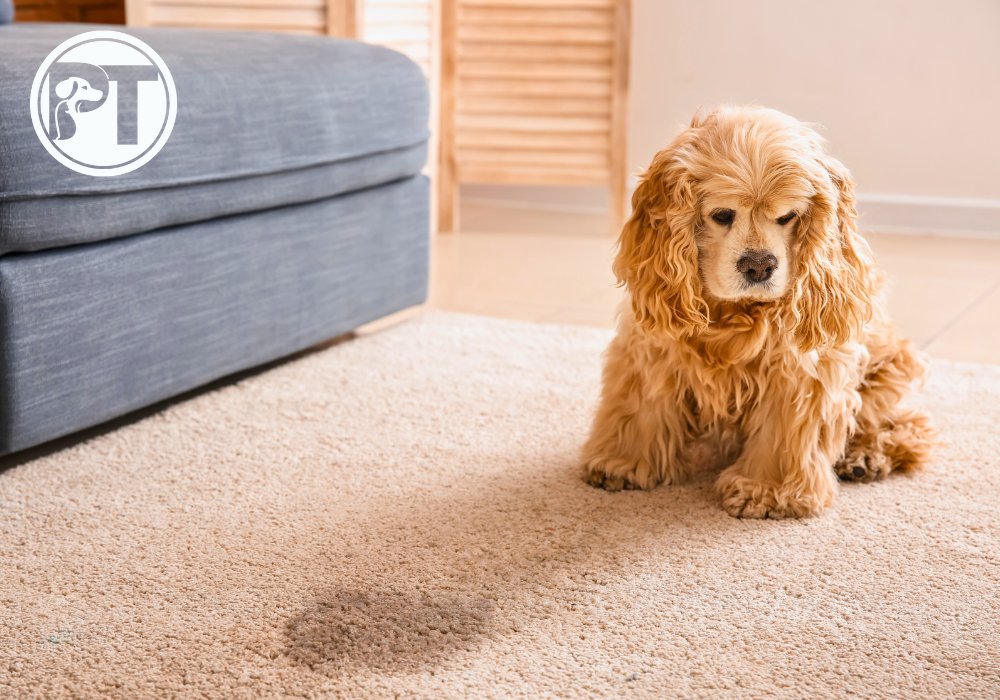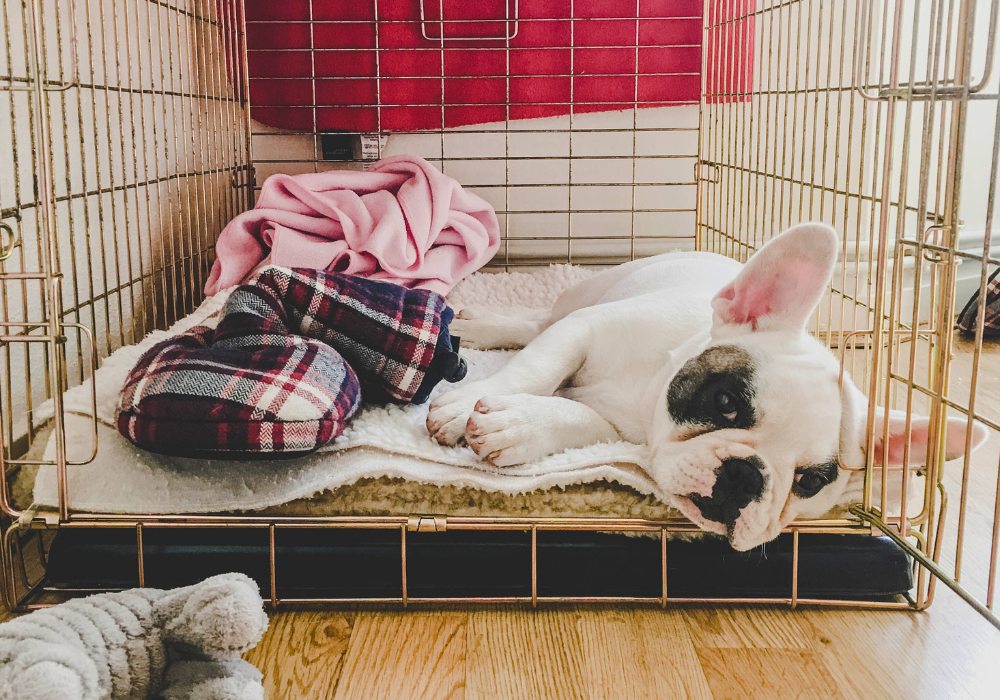How to Get Pet Urine Smell Out of Carpet (4 Easy Steps)

Pet urine is a common problem that many dog owners face. Not only is it unsightly, but it can also be difficult to remove the smell. However, using the right approach, you can effectively eliminate pet urine odor and keep your home smelling fresh.
This guide provides practical methods and strategies to eliminate lingering smells in carpets for good.
How to Remove Pet Urine Smell in Carpets in 4 Easy Steps
Below are some helpful tips to remove pet urine odor from your carpets. These methods are proven to work and can help you keep your home fresh and free of pet odor.

Step 1: Act quickly after a pet urine accident.
The most important tip is to act quickly during a pet urine accident. The longer the urine sits on the carpet, the harder it will be to remove.

Here's what you should do:
1. Absorb the pet urine.
Press a few paper towels or a clean cloth on the stained area. Apply firm pressure to soak up as much urine as possible. Repeat this process until no more moisture can be absorbed.
2. Avoid rubbing or scrubbing.
While scrubbing the spot vigorously may be tempting, this can worsen the situation. Rubbing can spread the urine and push it deeper into the carpet fibers, making it difficult to remove the odor. Instead, blot the area gently using a clean cloth or paper towel. This gentle blotting motion will help absorb the remaining moisture without further spreading the urine.
Step 2: Prepare and test the cleaning solution.
Before tackling the pet urine odor, you'll need to prepare a cleaning solution. There are two options you can try:
-
Homemade Cleaning Solution
One option is to mix a homemade cleaning solution using ingredients readily available in your kitchen. In a spray bottle, combine equal parts of water and white vinegar. Vinegar is known for its odor-neutralizing properties and can effectively combat the smell of pet urine.

-
Enzymatic Pet Stain Remover
You can also opt for an enzymatic pet stain and odor remover. This solution is designed to break down urine molecules and eliminate the odor. Enzymatic cleaners help neutralize the odor at its source, eliminating the unpleasant pet urine smell. They work by chemically reacting with the urine molecules, removing the odor rather than just masking it.
Enzymatic cleaners are popular among pet owners because they effectively eliminate pet urine odors. They are available at pet supply stores and online.
Test the Solution
Before using the cleaning solution, test it in an inconspicuous area of the carpet first. This will let you know if the cleaning solution will not cause any discoloration or damage.
To do this, apply a small amount of the solution to a hidden area or corner of the carpet and observe the result. Do not use the cleaning solution if you notice discolorations or adverse side effects.

Step 3: Clean the affected area.
Once your cleaning solution is ready, it’s time to clean the affected area. Here’s what you should do next:
1. Spray the cleaning solution.
Generously spray the cleaning solution onto the affected area. Ensure that the solution reaches deep into the carpet fibers. However, be cautious not to oversaturate the carpet pad. The goal is to thoroughly moisten the area without creating excessive moisture that may lead to mold or mildew.

2. Blot the area.
Using a clean cloth or paper towels, gently blot the sprayed area. Start from the edges of the stain and work inward to prevent spreading the urine further. Apply gentle pressure to absorb the moisture. Repeat this blotting process until the cloth or paper towels come away mostly dry.
3. Rinse with water.
Wipe the affected area with a damp cloth to remove any cleaning solution residue. This step helps ensure that no cleaning solution remains in the carpet fibers. After rinsing, use dry towels to blot the area and absorb excess moisture. Proper drying is important to prevent any remaining moisture from creating an environment for bacteria or mold growth.
Step 4: Eliminate the pet urine odor.
To effectively remove pet urine odor from your carpets, follow these odor-elimination techniques:
1. Apply baking soda over the treated area.
Baking soda can absorb and eliminate foul smells. To neutralize odors, sprinkle a generous amount of baking soda over the stained area. Use a soft brush to apply the baking soda to the carpet fibers. Make sure it reaches deep into the affected area. Let it sit for several hours or overnight to allow it to absorb the odor.

2. Vacuum the treated area.
After the baking soda has had time to work its magic, thoroughly vacuum the treated area. Use a vacuum cleaner with a brush or carpet attachment to ensure you remove the baking soda and any remaining odor.

How to Prevent Pet Urine Incidents
To prevent future incidents of pet urine in your carpets, consider the following prevention and maintenance tips:
A. Using Appropriate Deterrents
Employ pet-safe deterrents or barriers to discourage your dog from soiling the carpeted areas. Consider using products specifically designed to deter pets from urinating in certain areas, such as motion-activated alarms or indoor pet containment systems. You can also create physical barriers to restrict access in areas where accidents have occurred.

B. Potty Training
Potty training is essential to teaching your dog proper bathroom habits, thereby preventing accidents inside the house.
Here are some tips to help you effectively potty train your dog:
1. Establish a designated potty area.
Choose a spot in your yard where you want your dog to eliminate. Take your dog to this area consistently to reinforce the association between the location and the act of pottying.
2. Set a definite schedule.
Dogs thrive on routine, so establish a regular schedule for bathroom breaks. Take your dog outside to the designated potty area first thing in the morning, after meals, before bedtime, and at regular intervals. Consistency in timing helps your dog anticipate when it's time to eliminate.
3. Use positive reinforcement.
When your dog successfully eliminates in the designated potty area, praise and reward them immediately. Positive reinforcement reinforces the desired behavior and encourages your dog to repeat it in the future.
4. Supervise and limit access indoors.
Until your dog is fully potty trained, it’s important to supervise them closely when indoors. Consider using baby gates or crates to restrict access to carpeted areas where accidents are more likely to occur. This helps prevent accidents and allows you to redirect your dog to the designated potty area.
Can You Use an E-Collar for Potty Training?
Some dog owners may use an e-collar to supplement the training process. An e-collar is a dog training tool that delivers mild electronic stimulation to get your dog’s attention. The stimulation prompts your pet to follow commands or redirect unwanted behavior.

An e collar can be used as a training device to help your dog learn to go to their designated potty area. For example, you can use a low-level stimulation to gently remind your dog to follow your command.
To use the stimulation effectively, follow these steps:
- Start with a low level of stimulation and increase it gradually if needed.
- Take your dog to their designated potty area and give them the command to go potty.
- If your dog does not go potty, you can use a low-level stimulation to gently remind them.
- Be sure to praise and reward your dog with treats as soon as they follow your command.
- Be consistent in using the stimulation. If you only use it sometimes, your dog will not learn to associate it with the command to go potty.
Best E-Collars for Potty Training
E-collars come in a variety of sizes and features. It is important to choose one that is suitable for your dog's individual needs. You will need to consider your dog’s age, breed, and temperament when choosing an e-collar. Check out these e collar recommendations below:
1. Dogtra 200C Remote Training Collar

The Dogtra 200C remote trainer has an ultra-compact receiver designed for dogs with smaller neck sizes. It’s an intuitive dog training collar, excellent for reinforcing dog commands. With its 1/2-mile range, this Dogtra dog collar works well for backyard training to teach basic obedience and skills.
2. Micro Educator ME-300 Remote Dog Training Collar by E-Collar Technologies

The Micro Educator ME-300 is a compact dog training collar equipped with advanced features. It has 100 stimulation levels as well as vibration and tone options to cater to your dog’s unique needs. With a range of 1/3 mile, this Educator collar is perfect for close-range dog training sessions. Designed 20% smaller and lighter than the Mini Educator, this e collar is ideal for small dogs that require a gentler touch.
3. SportDog SD-425X FieldTrainer Remote Training Collar

The SportDog FieldTrainer 425X is a dog shock collar great for basic obedience training. It’s the smallest and lightest SportDog e-collar yet. Its 500-yard range and 21 static levels are sufficient for training dogs of any size.
Wrap Up
Dealing with pet urine smell in carpets can be tricky. However, you can eliminate the odor with prompt action, effective cleaning methods, and preventive measures. With the right approach, you can conquer this challenge and enjoy a fresh and odor-free living environment.
Frequently Asked Questions
How do I remove pet urine odor from carpets?
- To remove pet urine odor from carpets, absorb the urine using paper towels or a clean cloth. Blot the affected area gently without rubbing. Prepare a cleaning solution using vinegar and water, or use an enzymatic cleaner designed specifically for pet urine. Spray the solution on the affected area, blot again, rinse with water, and vacuum after drying.
Can I use baking soda to eliminate pet urine smell?
- Yes, baking soda is a natural deodorizer that can help absorb and neutralize pet urine odor. After cleaning the affected area, sprinkle a generous amount of baking soda, work it into the carpet fibers, and let it sit overnight. Vacuum the area the next day to remove the baking soda and any remaining odor.
How can I prevent my dog from urinating on the carpet?
- Consistent potty training is essential to prevent dogs from urinating on the carpet. You can also use deterrents or barriers to discourage your dog from soiling the carpeted areas.
Is it safe to use an e-collar for potty training?
- When used properly, e-collars can be used as a supplement to reinforce commands during potty training. The low-level stimulation serves as a gentle reminder for your dog to follow your command. However, it’s crucial to ensure the proper usage of the device and to associate positive reinforcement with successful pottying.
How often should I clean my carpets to prevent pet urine odor?
- Regular carpet cleaning is important to maintain freshness and prevent pet urine odor from settling into the fibers. It is recommended to schedule professional carpet cleanings at least once or twice a year. Additionally, you can perform DIY methods such as steam cleaning every few months to keep your carpets clean and odor-free.
You might also enjoy...
-
Posted in
Pet Training, Training Tips



this is such an important post for me haha! we are potty training our dog and baby at the same time, one of them is getting the idea, but the puppy on the other hand, keeps peeing everywhere. neither my husband or I can stand the smell of pet urine odor so this post was a LIFE SAVER!